Mulled wine is another mediaeval tradition the Advent and Christmas seasons. Don’t miss out on this hot delicious drink–It is sure to bring cheer amidst the cold!
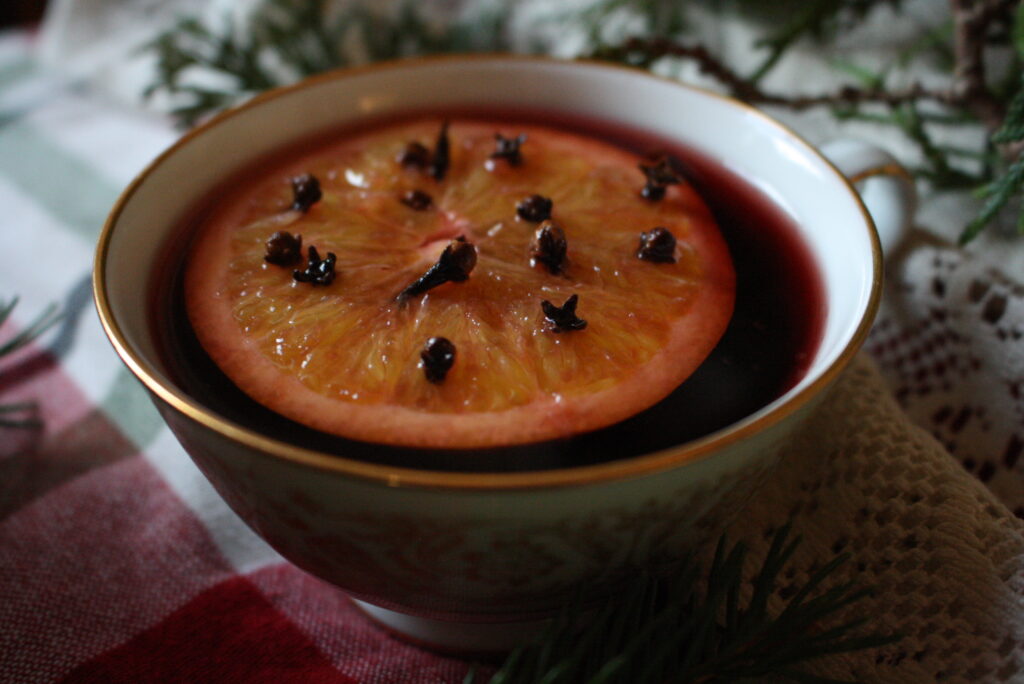
Ever popular in Europe since the Middle Ages, hot mulled wine is not quite as well-known in North America. What is it? Quite simply, it is wine, infused with different spices and served hot.
Mulled Wine in the Middle Ages
Wine culture in Europe originated with the Greeks and Romans. Through their influence, viticulture spread throughout Central Europe. By the Mediaeval period it had become naturalized in the German and French lands. Wine that was sweetened and infused with spices was known as Ypocras. Many times, this was actually done to extend the life of a wine that was starting to go off.
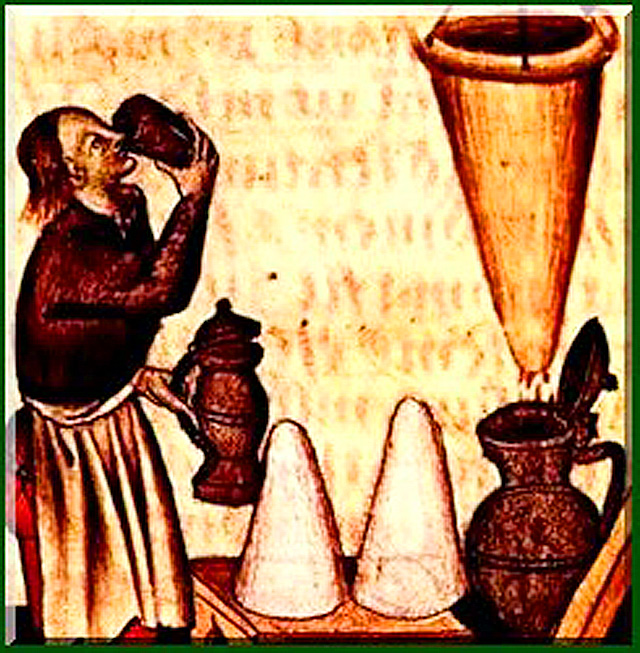
What kind of spices? Mulled wine comes up in the 14th century English cookbook, The Forme of Cury. The recipe calls for:
- cinnamon
- cardamom
- ginger
- long pepper
- nutmeg
- galangal
- cloves
- marjoram
- grains of paradise
That’s a long list of exotic spices that were none too cheap! For this reason, the tradition of mulled wine became a seasonal treat to be enjoyed on special feast days in the cold days leading up to the climax of Christmas.
There are any number of variations of mulled wine–all different spices and even the different kinds of wine to use. It is a great opportunity to experiment and come up with your unique flavour!
Glühwein
Glühwein is the German variation of mulled wine. It is still a popular hot beverage for Advent and the Christmas season. Traditionally, folk enjoy it whilst standing around a fiery brazier at a Christmas market.
For Glühwein, heat a red wine in a saucepan on the stove (or pot over the fire). Do not let it boil. Add in cinnamon sticks, orange slices, aniseed. Sweeten to your taste with sugar or honey. Let it steep for at least 5-10 minutes–if not an hour. This lets the spices release their flavor into the drink.
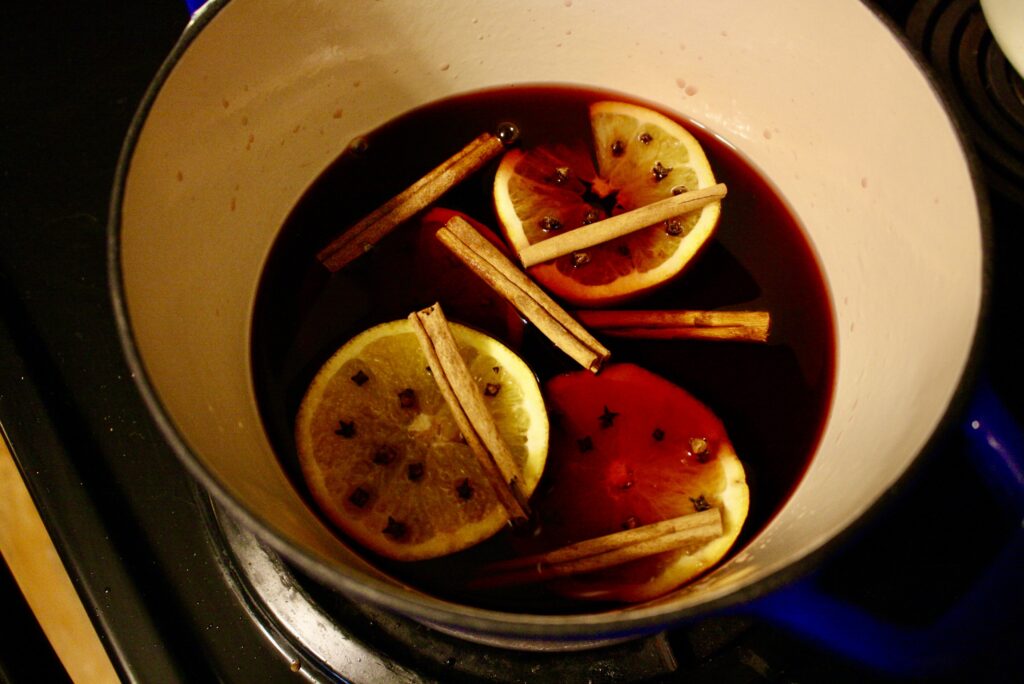
Optional: to give it an extra something, add a shot of brandy or rum. But be careful: a hot alcoholic drink can be sneaky…
What kind of wine?
Don’t use a high quality wine for this. After all, most of the flavor comes from the sugar and spice. Any red should do.
White wine is also an option. This is a tradition in the Franconian regions of Germany.
No wine? Try hard apple cider as your base.
Glögg
In the Scandinavian regions, hot mulled wine was called glödgat vin, or glögg for short. It was sure you warm your body and your spirits after skiing through the snow-clad forest and hills.
With glögg, add cinnamon sticks, cloves, ginger, orange slices and most importantly for most Scandinavian holiday recipes–cardamon. Then sweeten with either brown sugar or honey.
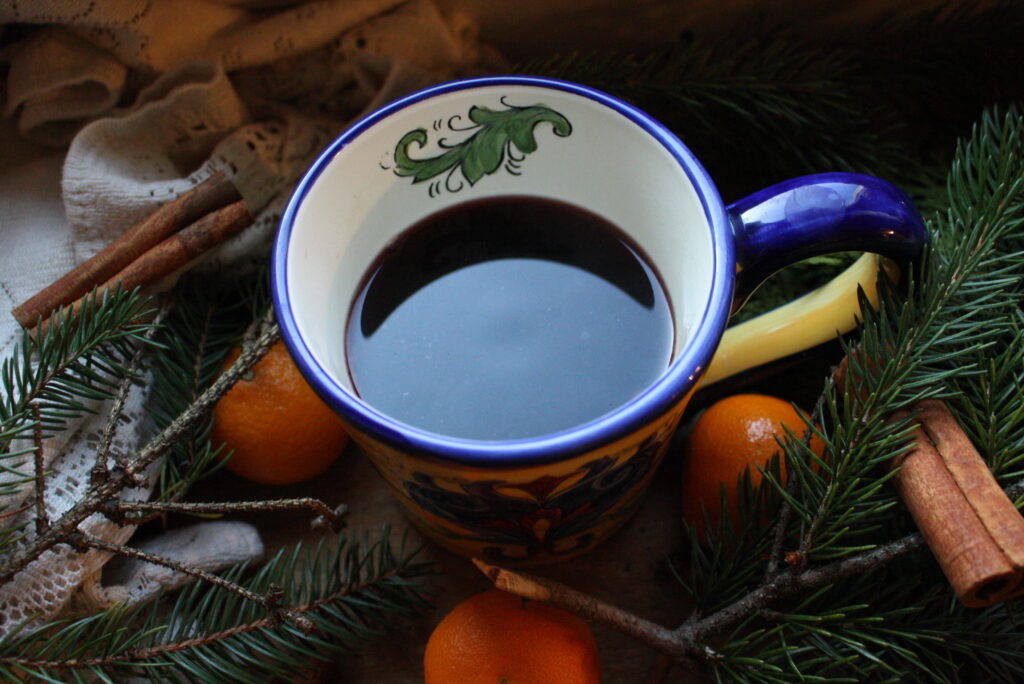
A Non-Alcoholic Option:
Extend your hospitality to everyone! A non-alcoholic version of Glühwein can made with grape juice with the same spices!
The mulled wine traditions of Germany and Scandinavia are some of those that are alive and well, stretching back to the Middle Ages. Certainly we enjoyed rediscovering them. There is no better way to bring mirth to the dark evenings!
~Nathanael and Emily
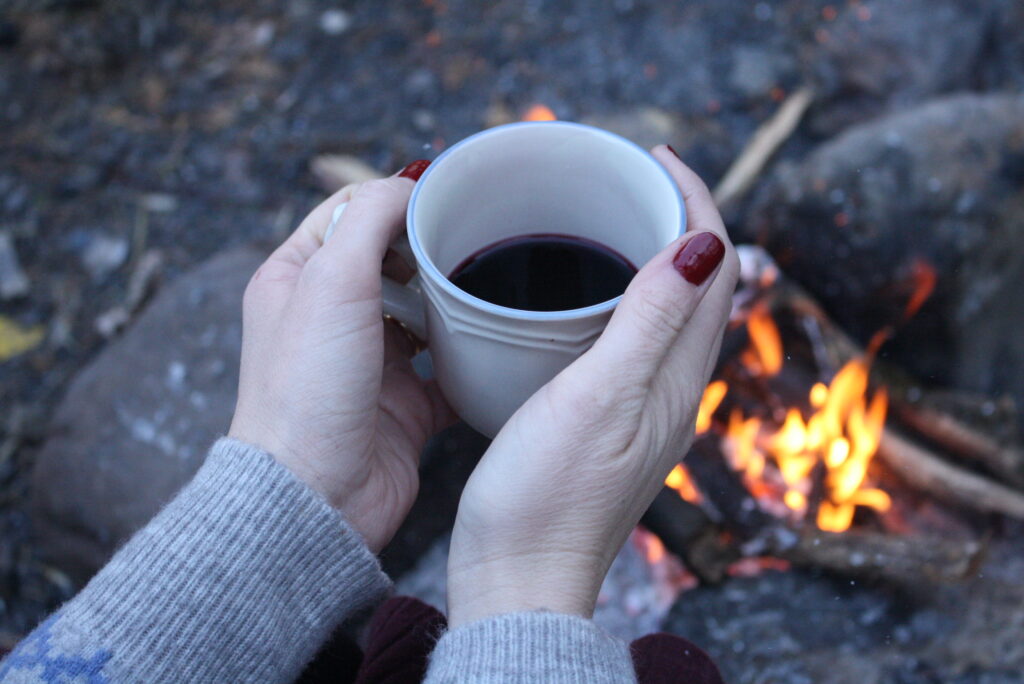
Want some other ideas for cold-weather drinks? Check out these other posts:


Leave a Reply